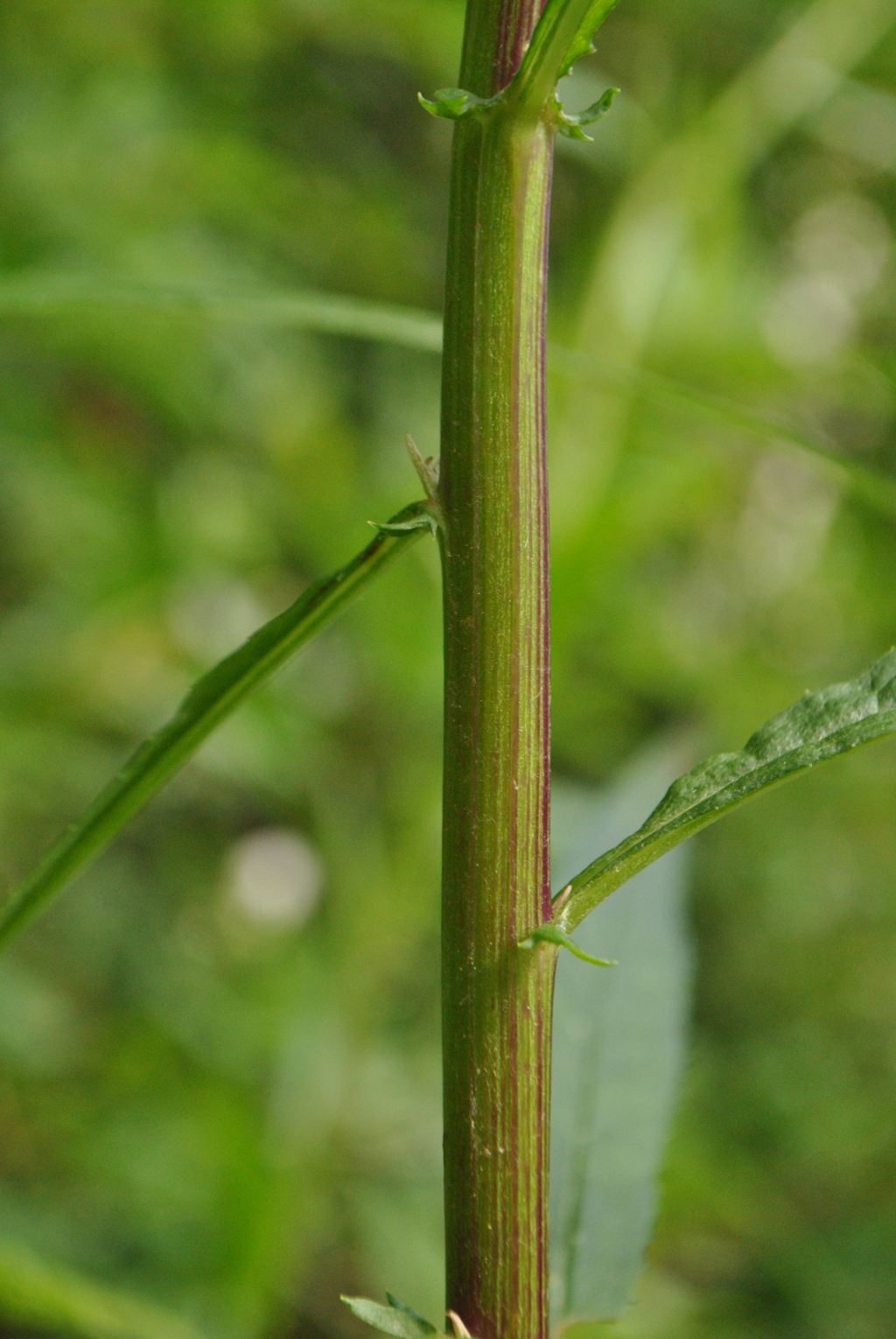Senecio linearifolius var. denticulatus
I.Thomps.Plants not glaucous. Upper-stem leaves very narrow-elliptic, narrow-lanceolate or linear, with l:w ratio 4–15; base (excluding auricles) cuneate; auricles if present ± disjunct from lamina, with lobes or segments 1 or 2; margin denticulate or dentate, mostly not or only minutely recurved or revolute; lower surface glabrous or somewhat cobwebby; secondary venation usually distinct, raised; tertiary venation usually faintly discernible. Involucre 2.5–4.0 mm long, 1.5–2.0 mm diam.; bracts 7–11. Florets 12–22; ray florets 4–8; disc florets 8–14. Cypselas 1.5–1.8 mm long, papillose-hairy in bands. Flowers most of the year, but mostly in summer.
GipP, CVU, EGL, EGU, WPro, HSF, HNF, Strz, MonT, HFE, VAlp. Also Tas. In forests throughout the eastern half of the state, west to near Melbourne.
This variety intergrades with var. linearifolius east of Melbourne and with var. latifolius at the upper end of its altitudinal range (Thompson 2004b).
 Spinning
Spinning

